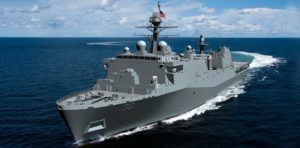
While U.S. Navy/Marine Corps requirements call for 38 amphibious ships to support the simultaneous deployment of two Marine Expeditionary Brigades, the Navy has not budgeted for any such ships in its FY 2020 budget. The requirements call for 12 LHDs or LHAs, 13 LPDs, and 13 LSDs or LPD Flight II ships. Delaying the build of new amphibious ships appears to have been a bill payer for higher Navy priorities, such as the Virginia-class attack submarine (SSN-774) and the service's push…














